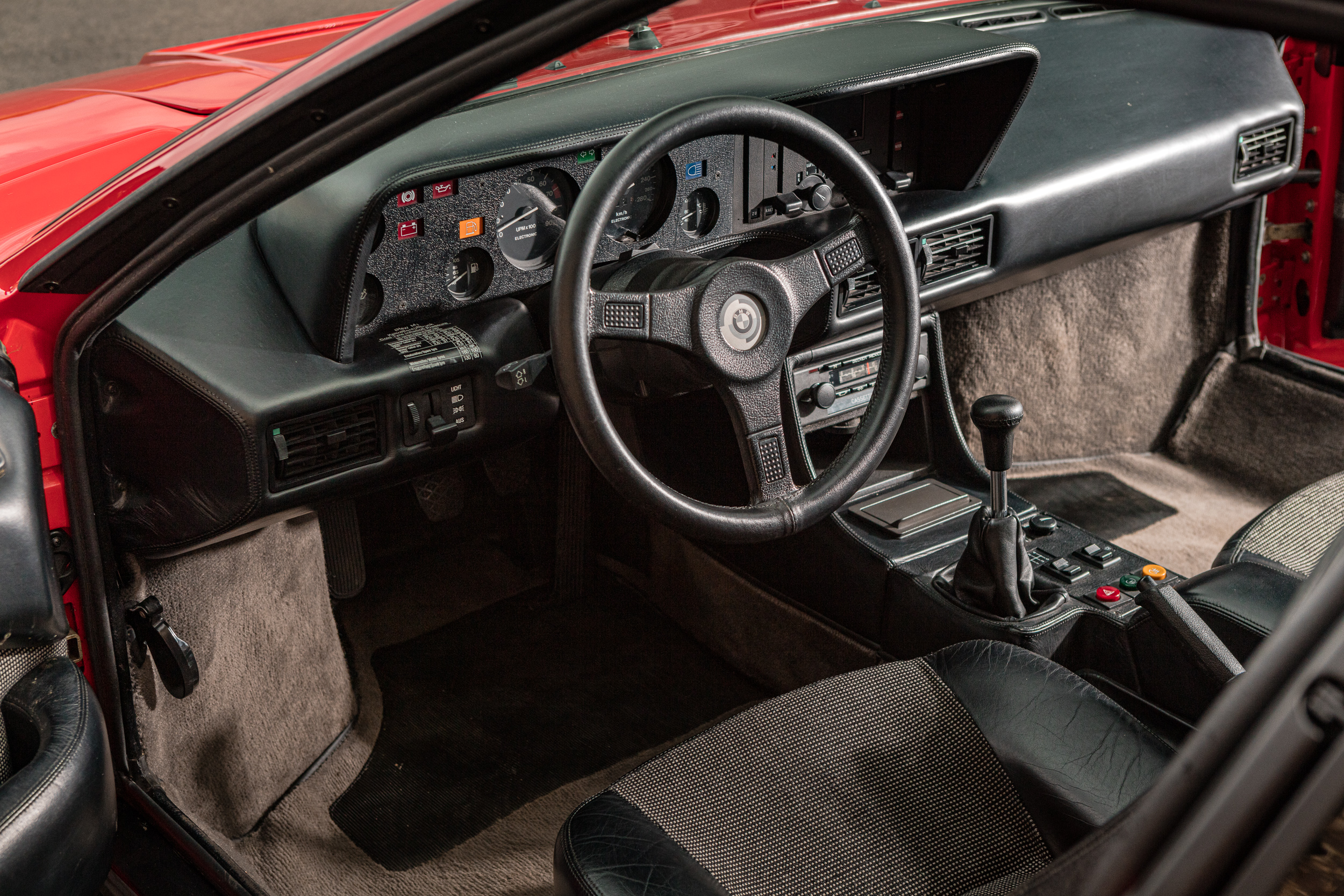The Italian DNA of the original BMW M car
Back in 1978 BMW was not known for its high-performance cars. The M5 wasn’t a consideration, the M3 had yet to be dreamt of, and the M Coupe was 20 years away.
The BMW M1 was the first car to wear the now revered ‘M’ moniker. It set the stage for future fast models from Munich, but its heritage is distinctly Italian and it almost didn’t happen.
Intended as the car to take the fight to Porsche, competing in Group-5 sports car racing, BMW’s Motorsport division knew it hadn’t the resources to pull the project off in time. 400 road-going cars had to be produced for the M1 to be homologated for the race series, so it enlisted the help of none other than Lamborghini to undertake the heavy lifting.
The ‘bull of Sant’Agata’ was tasked with sorting the engineering details, developing the prototypes and, ultimately, manufacture the cars. Famous names contributed to the project – with Gianpaolo Dallara designing the spaceframe chassis and Giorgetto Giugaro sculpting the distinctive bodywork.

Picture credit: Alex Lawrence - www.thewhitewall.co
The M1 features a mid-engine layout, inspired by the BMW Turbo sports-car concept first shown back in 1972. The finished car is undeniably Italian in its style but some design flourishes can be seen in the initial concept. By the time the M1 was on the drawing board in Italy it had ditched the original idea of a turbo-charged, four-cylinder engine and instead adopted a BMW 3.5-litre six-cylinder unit.
Unfortunately, Lamborghini back then was not the powerhouse it is today, and its financial situation was dire enough to delay the start of manufacturing. As bankruptcy loomed, BMW cancelled the contract.
All was not lost. A handful of prototypes had been built and a band of former Lamborghini engineers set up shop just down the road from Sant’Agata and were able to complete the engineering needed to allow the project to continue.
The chop and change of partners meant that construction was far from straightforward. The chassis was made in Modena, Italy, while the fibreglass body was produced by a different firm in the same city. The two were then shipped to Ital Design in Turin, who would mate them with the interior. The part-built cars were then sent to Stuttgart, Germany where long-time BMW partner Baur could install the engine and undertake final assembly. Once compete each car was dispatched to Munich to allow BMW Motorsport the opportunity to inspect, prepare and deliver the cars.
To add insult to injury, by the time the M1 was ready the racing rules had changed and it could not compete as intended. However, BMW reached a deal with the Formula One Constructors Association, and the one-make Procar series was born.
The top-five qualifiers in each Formula 1 race would pilot race-prepared M1s, competing against fifteen privateers in identical cars. The series ran for two years, with Niki Lauda winning the 1979 season and Nelson Piquet the year after, but it never really found favour. As a model it also competed in the 24 Hours of Le Mans from 1981 to 1986, and one was converted into Group B rally spec for the 1982 season.
Today it remains one of BMW’s rarest models, as only 453 production cars were built - and of that roughly 53 were configured as race cars. If you’re lucky enough to find one for sale today, you can expect to pay at least £500,000 and depending on the car’s condition and possible race pedigree, the price could be a whole lot higher.
What do you think of the BMW M1? Let us know in the comments below

COMMENT